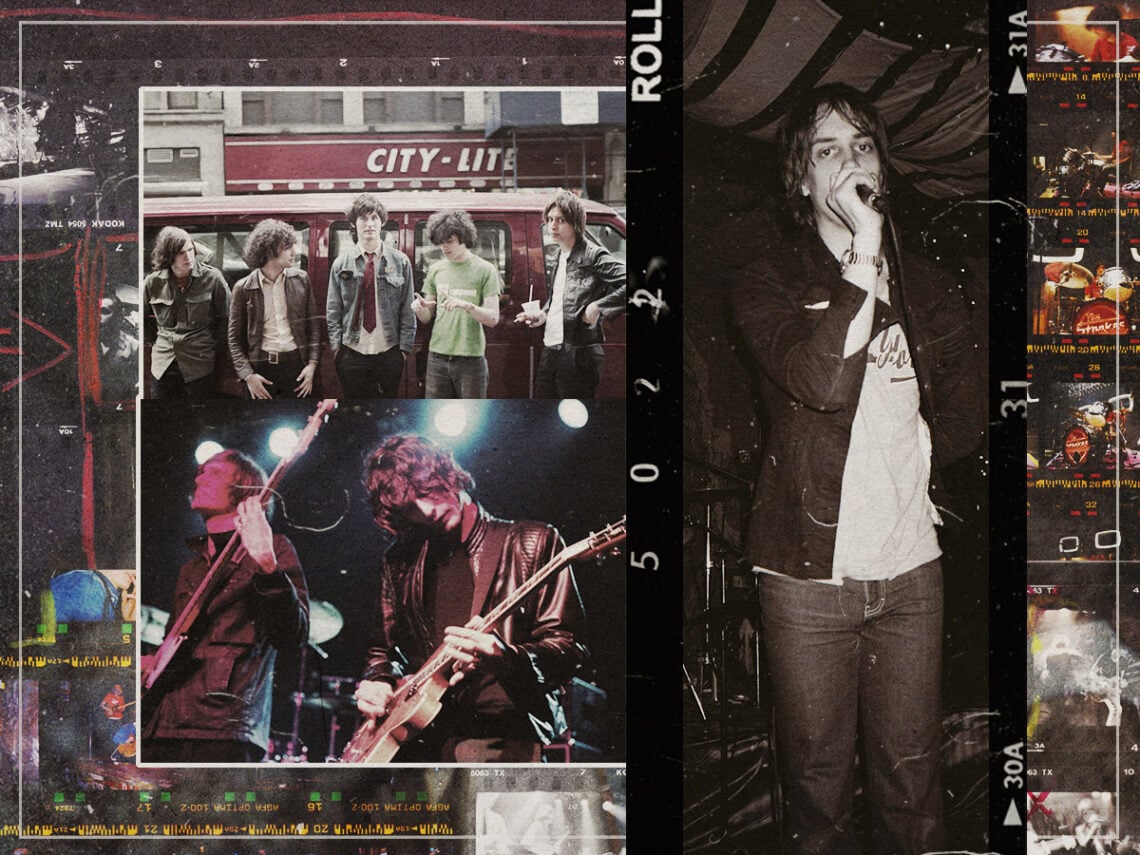
(Credits: Far Out / Cody Smyth)
Mon 4 August 2025 13:00, UK
From the very moment entertainment becomes accessible to us, New York is rammed down our throats.
Skyline canvases line the walls of teenage bedrooms while glossy romcoms, destined for sickeningly happy endings, all seem to transpire under the shadow of the Empire State. It is and always has been the ultimate symbol of metropolitan prosperity in the Western world, but in reality, it’s not for those reasons I just mentioned.
Because, in truth, its greatness is rooted in the very same thing as every other artistic city in the world. No, not in the glitz and glamour of its most exclusive postcodes, but in the damp shadows of its squalid neighbourhoods, where observational kids, soaking in the mood of neglected communities, brazenly put forward musical ideas to soundtrack the world around them.
New York’s vibrant indie scene from the 2000s, charmingly titled the ‘Meet Me In The Bathroom’ scene, was one such moment in history. As culture turned from the exciting ’90s to the somewhat anticlimactic millennium, these new bands found themselves in a New York dampened by the bleak reality of mortality. As the smoke from 9/11 subsided and the grim feeling of uncertainty intensified, they decided to soundtrack what could be the swansong of a great creative society.
“These are bands formed by kids in one era, and then in the beginning of their early youth realised in a very dramatic fashion that they were going to die and that everyone around them was going to die and their city could be smouldering,” explained Lizzy Goodman, author of the book that chronicled the scene, Meet Me in the Bathroom.
She added, “It was kind of inspiring in its sense of destruction… ‘I’m going to go out seven nights a week, not five nights a week’ and also in the sense of ‘I don’t have as much time as I thought, so I’m not going to sit around for the next five years, half-ass playing in my band and working at the coffee shop. I’m going to stay up until dawn every single night with my friends trying to make this record’.”
In that was a sense of artistic fearlessness that danced in the face of fear and celebrated what was unknowingly the last glimpse of private civilisation. The harmful clutches of mass digitalisation hadn’t yet sunk into the music scene, so New York in the 2000s became the last time bands could play a show, wreak absolute havoc and not have to delete embarrassing video footage the year after. It was all about being in the moment and soundtracking the moment.
“We didn’t have phones, which was just so great,” stalwart of the scene, Hamilton Leithauser, told Far Out in February, when asked about its beauty.
He added, “That’s the ultimate ‘everything was better back then’ line, but it really was. Not everybody was on their fucking phone the entire time.”
The music that came out of it was appropriately transitional. Somewhere between 1970s nostalgia and future innovation, The Strokes, Yeah Yeah Yeahs, Interpol, The Walkmen, and LCD Soundsystem created music for a generation in limbo. Together, they sold millions of records and laid the foundation for a style of indie music that would follow in the coming decades.
So, what album outsold the rest?
Unsurprisingly, The Strokes’ seminal record, Is This It, was the scene’s biggest-hitting record. It was an all-killer-no-filler record that’s lo-fi production soundscape married perfectly with the apathetic style of Julian Casablancas’ vocals. It was somewhere between punk, classic rock and modern indie that, in many ways, encapsulated the true sound of an artistically rich and diverse New York.
Because of that, it went global. The world’s most-watched city had a soundtrack and everyone lapped it up, especially here, in the UK. It sold over two million copies worldwide, and in its first week of release, the record sold 48,000 copies in the UK, compared to just a third of that in the US, with 16,000 copies sold.
Related Topics

